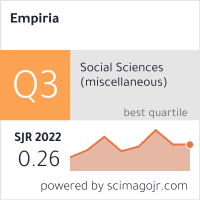The meanings of images: advantages and disadvantages of photo-elicitation interview in a study on young people and secondary schooling in the City of Buenos Aires
DOI:
https://doi.org/10.5944/empiria.22.2011.83Keywords:
imaged based research, visual sociology, qualitative methods, photo-elicitationAbstract
This paper examines the use of photo-elicitation interviews in the Anglo-Saxon and Argentinean contexts. While in the former, its use is extensive; in the latter, only few researchers have engaged with it. In this type of interview, researchers use photographs to prompt memories, feelings, stories and views from interviewees. Following the Anglo-Saxon literature and the assessment of one Argentinean study, this article argues that photo-elicitation interviews could notably enrich the study of certain social phenomena. Moreover, it offers tools to assess the use of this interview technique in Argentina and Ibero-América. The first section, following international literature, analyses the scope, limitations, and benefits of the photo-elicitation interview. The second section examines the use of visual materials in sociological research in Argentina, and the use of the photo-elicitation interview in one qualitative study carried out in the City of Buenos Aires in 2007. Here, the cons, pros and ethical challenges of the use of this type of interview are unfolded. This section demonstrates that the outcomes of the photo-elicitation interview supersedes the multi-layered complexities this technique involves.











